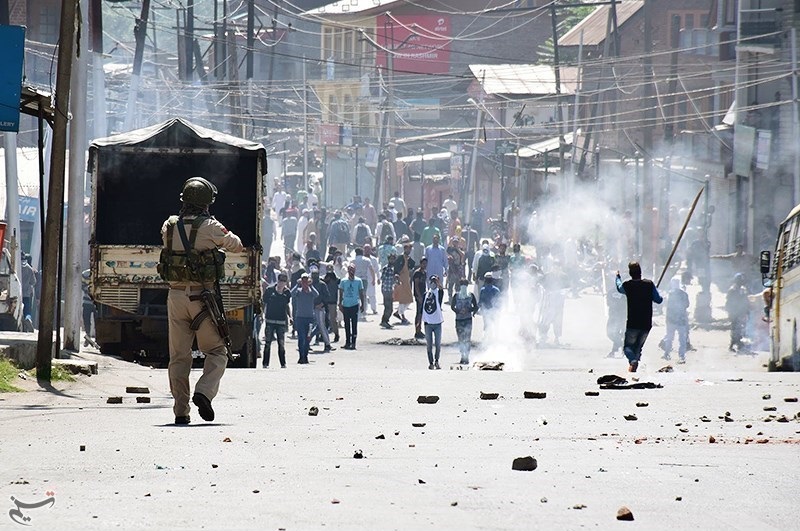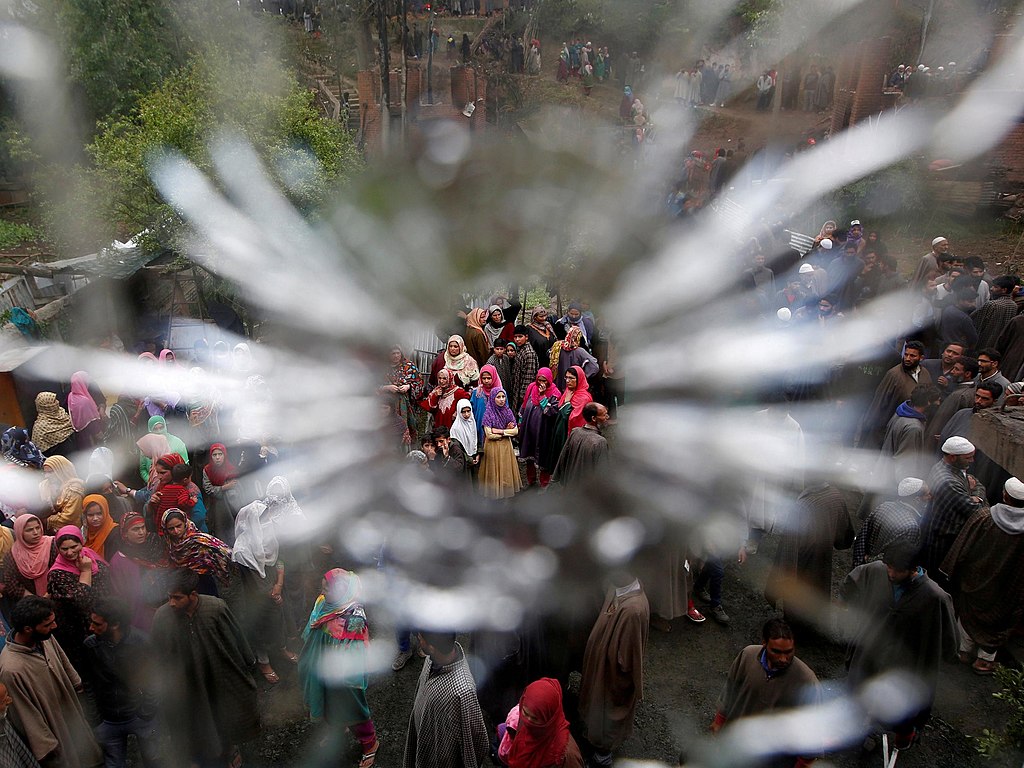
Militant groups in Kashmir appeared to be in tactical retreat due to an unprecedented communication lockdown and the heavy deployment of troops in every nook and corner of the valley following the revocation of Kashmir’s special status on August 5, 2019. However, driven mainly by indigenous, local recruits, militant outfits have kept a low-intensity conflict simmering in the region in the last two years. Kashmir’s changing security dynamics provide Pakistan with potential avenues to support militancy in Kashmir, especially as New Delhi struggles to grapple with evolving militant dynamics through their unchanged, hard-line Kashmir policies.
Changing Militancy in Kashmir
The killing of Riyaz Naikoo, the operational commander of Hizbul Mujahideen, in May 2020 significantly weakened the outfit but commenced a new chapter in locally-driven militancy. His death marked an end to the pre-August 5 militancy phase, which was primarily sustained through overwhelming support from local populations and widespread social media propagation often centered around iconic militant figures. After enjoying pre-eminence for three decades, Hizbul Mujahideen disappeared from the scene, giving way to freshly minted groups like The Resistance Front, Peoples’ Anti-Fascist Front, among others.
Internationally sanctioned, Pakistan-based outfits like Lashkar-e-Taiba (LeT) and Jaish-e-Muhammad (JeM), which attracted local and foreign (mainly Pakistani) recruits, have adopted new avatars. Since August 5, the groups’ social media propaganda drive diminished, claiming no attacks. However, security forces believe both LeT and JeM use The Resistance Front and Peoples’ Anti-Fascist Front—as well as United Liberation Front and Ghaznavi Force—to anonymize their attacks and propaganda dissemination. These brands have adopted a more secularized idiom and ideology to justify their activities, emphasizing resistance against occupation, fascism, and Hindutva as raison d’etre instead of jihad or a religious war. Unlike in previous militancy phases, there is no centralized jihadi figure like Hafiz Sayeed or Masood Azhar driving these brands.
Militant groups have adopted a more secularized idiom and ideology to justify their activities, emphasizing resistance against occupation, fascism, and Hindutva as raison d’etre instead of jihad or a religious war.
Largely driven by sentiments of alienation, there is no shortage of local recruits for militant outfits. However, a shortage of weapons has forced new militants into shifting tactics. Last September, an Indian Army General claimed that militants currently rely on sidearms instead of their previous weapon of choice: the AK-47. Security forces have increased pistol recoveries post-encounters, and in many cases, the slain militants were found weapon-less. While the dearth of weaponry may have come as a challenge, militants improvised tactics, leading to security forces grabbling with what they describe as “Hybrid Militancy.”
A “Hybrid Militant”is an unlisted member of an outfit, trained in small weapons, to carry out targeted killings. After completing an assigned task (mainly targeting civilians through pistols), they go back to their typical day-to-day life instead of going underground like the full-time recruits, making it difficult for security forces to apprehend them, leading to more attacks.
Militant outfits have also changed the nature of their social media propaganda dissemination. In previous militancy phases, social media propagation was largely disorganized and decentralized. Militant recruits would share pictures of themselves after joining the ranks while immediately claiming attacks. These social media tactics made militants susceptible to state identification. In the current phase, well-crafted, professionally produced videos and images are regularly posted on Telegram channels. However, their circulation is centralized and anonymized to maintain continuity and protect militants.
Statistics reveal that the proportion of local militants killed in counterinsurgency increased relative to previous years. While 60 percent and 77 percent of all militants killed in 2016 and 2017 respectively were foreigners, that number shrunk to 15 percent in 2020. The percentage of foreign militants killed in 2021 so far is below 10 percent.* The recruitment of local youth in militant outfits remains an unresolved challenge. Initiatives such as barring slain militants’ funerals, a surrender policy, and encouraging parental intervention have failed to generate the desired outcomes. In the year 2019, 126 local youth joined the militancy. The number rose to 167 in 2020, the second-highest in a decade. This year (until the end of October), about 125* local Kashmiris have joined militant ranks, as per government sources.
The nature of attacks has changed in the last two years. Militants are now targeting civilians and political workers without security protection. Many of these attacks have direct implications for government policies. For instance, killing civilians belonging to minority communities by The Resistance Front has generated sensationalism about militant activity in the region and disrupted the government policy of rehabilitating the Kashmiri Pandits living in exile since 1990. Likewise, targeting entrepreneurs and migrant laborers will dissuade any potential industrial investments and infrastructural development. Politically, these killings embarrass the Bhartiya Janata Party by disrupting rhetorical attempts to engineer a “normalcy” narrative in the region.
The nature of these targeted killings suggests that the assassins carry out pinpoint attacks with full knowledge of the local terrain, deployment of security forces in the area at a particular time, and the daily routine of the targets. The involvement of local youth in militancy complicates conflict dynamics and puts an immense strain on security forces to ensure safety and security for civilians at risk.

While Islamabad Waits, New Delhi Resists Change
Reinvigorating militancy under new banners that are not designated internationally better insulates Pakistan from international censure, especially in light of FATF grey-listing. The impetus is on showcasing militancy as locally-driven and responding to the regional political developments rather than a manifestation of global jihad. It seems Pakistan’s military establishment wants to conceal its sponsoring of the militant organizations by phasing out groups such as LeT and JeM that are internationally proscribed terror organizations. The centralization of militant propaganda will serve as a control mechanism to regulate the fall-out of a significant terror strike, such as in Pulwama. Although the recent spate of attacks demonstrates the capability and reach of the militant outfits in Kashmir, there is little effort and will to conduct larger attacks as it may provoke an escalatory cross-border kinetic action from India. Pakistan can potentially exploit this situation to increase the presence and foothold of militant operations in Kashmir. The larger question is if and when Pakistan will give up its wait-and-watch posture to up the ante against India in Kashmir.
The government remains indifferent to addressing Kashmiri alienation – a fundamental driver for local youth joining and supporting militancy.
This new phase of militancy has complicated New Delhi’s security posture and the ruling party’s political objectives. The Bharatiya Janata Party promised that abrogating Article 370 and 35A would end terrorism and unleash a new wave of development and private investment in Kashmir. These objectives have not been met. Instead, the decision alienated locals, particularly the youth, some of whom have resorted to militancy.
Local recruitment is a concern for New Delhi as it grapples with generating acquiescence for the decisions taken on August 5. These local militants have managed to strike at the core of Modi’s Kashmir policy, even without proper training or weaponry. Even as the government claims normalcy in Jammu and Kashmir, the changing nature of homegrown militancy poses new security challenges compelling the security establishment to enforce reactionary tactics instead of implementing proactive policies. The hard-line approach of the Modi government is centered on Machismo and displaying an iron fist instead of innovative policy interventions. The government remains indifferent to addressing Kashmiri alienation – a fundamental driver for local youth joining and supporting militancy. Half-hearted political gestures, regular insults to the local population through unpopular policy changes, harsh anti-terror laws for every instance of dissent, and a no-prisoners counterinsurgency strategy are precipitating growing Kashmiri anger. The government has failed to meet the core objectives of weeding out separatism and terrorism and instead put India’s internal security at risk of an increased militant uprising in Kashmir.
***
*The author has conducted anonymous interviews with security officials for this essay.
Image 1: Tasnim News Agency via Wikimedia Commons
Image 2: Ubaidsardar via Wikimedia Commons


